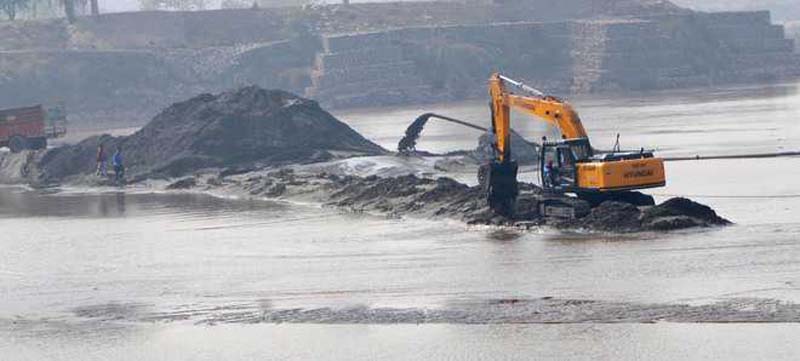Illegal and unscientific mining is one most serious problem right now throughout India so much so that it echoed in UN Environment Programme also due to imminent environmental disaster. River sand is preferred over other sand sources due to less effort, better quality and obviously cost factor. As per guidelines amount of sand extracted should be proportionate to amount that can be replenished. But sand and gravel use is so much in construction that every ton of cement requires seven to eight times sand/gravel which by any standards is huge quantity. Ever increasing construction activities has put extra pressure on already over mined rivers. The problem is more severe in twin cities of Jammu and Kashmir as lots of Government sponsored construction work in whole city is going on under Smart City Projects. All these construction or repair activities have been sublet to civil contractors who as usual look for cheapest source of sand and gravel. A late night visit to any part of city reveals hustle and bustle of tractor trolleys and dumpers dumping sand and gravel material and rushing back for another trip. A big mafia with officials actively involved, so much powerful lobby that they dare to extract material in broad day light even near prohibited bridges. Media regularly highlights these illegal operation, some temporary action is taken but only in few cases. Now Jammu and Kashmir Government has come up with new guidelines for sand, gravel and clay extraction defining clearly up to what distance from bridges extraction can be done, both upstream and downstream. Administration gave big relief for clay tiles manufacturer or public who have kuccha houses as earlier environmental clearance has been waived off along with many other users of sand and gravel. The impact of illegal and unscientific aggregates is huge, it changes the ph value of water, filtration capacity of underground water gets reduced and the results are beyond imagination, lowering of water level, pollution of ground water, weakening of bridge foundations and banks of rivers. Result is less water in tube wells and floods due to weakened banks. This illegal mining also destroys habitat of aquatic and micro-organisms’ life, far less fish now in rivers. One way to reduce dependency on natural sand and gravel is to use alternative materials like incinerator ash instead of sand or other way is using recycled building and quarry dust material in road building or for low quality works. In official language it may be called ‘minor mineral’ but it is the most major geological resource of country which has to be conserved, to be used cautiously and not to be used at all if alternative is available. Immediate measures include Municipalities recycling building or other construction malba and make it available to its own contractors. The other alternatives like establishing more crushers for sand and gravel but with proper pollution norms and far away from human habitats. UNEP suggested converting crop residue into building material which can be a solution to long pending stubble burning issue. Already companies that manufacture recycled building material has to pay far less GST (5%-12%) than companies manufacturing new construction material (18%-28%). But all this requires huge funding for which local administration has to provide more incentives.
It is clear that mere framing/modification of laws will not solve this imminent problem which has huge impact on our day to day life. Whatever laws are there, those have to be implemented strictly. Recently only cancelation of Registration Certificates of vehicles carrying illegal mining material have been done. There are too many loop holes in laws, minor monetary penalties are outdated, of no use. Simultaneously, alternatives have to be explored specifically in Government funded constructions, it may cost more initially but the benefits are immense, otherwise imminent crisis is not far away, it’s staring at us.
Trending Now
E-Paper


